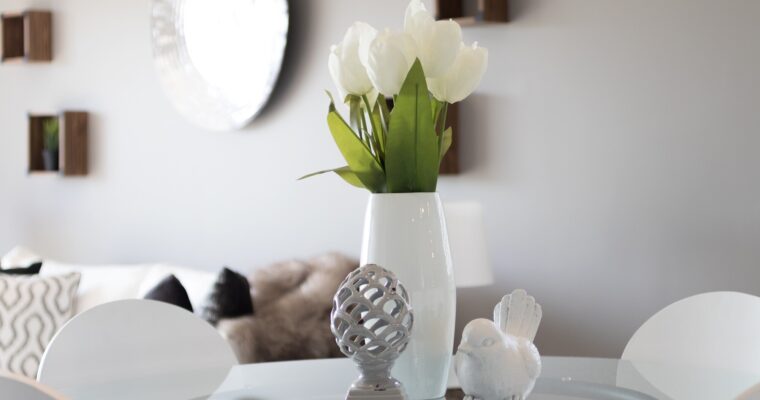A Quick Guide to Staging Houses for a Quick Sale
Did you know that about 74% of buyers know what they’re looking for in a house before they find the right match? Staging your home can help them to see how your home functions and how it can meet those expectations.
The question is, how do you go about staging a house? Should you leave it the way it is, with all of your furniture and decor in place? Should you hire a company to stage your home for you?
Staging houses isn’t hard as long as you know a few key tips. If you want to learn how to stage a house to speed up the sales process, you’ve come to the right place.
Read on for a quick and simple guide on how to stage a home for a quick sale.
What Is Home Staging?
Before we dive into our home staging tips, let’s answer an important question: what is home staging?
Home staging is a type of visual merchandising. The goal is to draw on some of the simplest and most widely appealing elements of interior design to show your home “in action.” In other words, by staging your home wisely, you can give buyers a clearer sense of how they can use that space and why it’s suitable for their needs.
Start By Cleaning and Decluttering
The first thing you’re going to want to do is to give your a house a good cleaning. Vacuum the floors and mop any hard flooring, dust all surfaces, scrub the windowsills and baseboards, and wash the windows. Your home is at its best when it’s free of dirt, dust, grime, and anything else that might make it look poorer in quality than it actually is.
Then, declutter every single room. Organize all those stacks of books and magazines that have piled up on end tables, throw away junk mail, and put everything in its place–whether that’s tucked away on a shelf or tossed in the garbage.
Depersonalize Your Decor
Even if you’re using your own belongings to stage your house, you want to create a “blank canvas.” What that means is that you want potential buyers to walk in and visualize their own personal details, which is much easier when yours aren’t already there.
Take down any artwork that you wouldn’t find in public spaces like offices or hotels. Remove personal pictures from the walls, shelves, and fridge. Consider boxing up any quirky collections or posters that may not be to everyone’s liking.
While you don’t want bare walls and shelves, it’s important that there isn’t too much going on to distract your potential buyer’s attention.
Think About Freshness
Nothing breathes life into a space like live plants and natural lighting. Don’t worry–you don’t have to turn your home into a jungle. You just need a few well-placed potted plants and some open, airy windows.
There are plenty of potted plants that you can get for $10 or less that will look great on shelves and end tables. Arrowhead plants, ferns, and ivy will all provide a lushness that is both inviting and attractive.
Open all blinds and pull back curtains to let in natural light. If you can, host open houses or tours during peak sunlight hours. Natural lighting is the most flattering to your home and tends to make rooms appear bigger. And don’t forget about the outside! You don’t want potential buyers walking through an overgrown yard before they even step foot inside your home. So, grab that battery powered lawn mower and give your landscape the curb appeal it deserves, letting those green fingers really shine.
Go With Neutral Walls
Perhaps you want on a painting or wallpapering spree when you purchased your home. While you love the color scheme or pattern you’ve chosen, your buyer probably won’t share the exact same taste. Oftentimes, brightly painted or wallpapered walls will come up when negotiating price, so you might as well go neutral before listing.
White, off-white, and beige are all safe choices when repainting your walls while staging a house. The good news is that these light neutral colors accomplish a few things at once. They create a blank canvas for your buyer, lower the risk of negotiations, and amplify natural light.
Pick Appropriate Furniture
Now, it’s time for the biggest element of staging: picking the appropriate furniture for each room. The goal is to give each room a clear purpose while using furniture that fits to scale.
You know what belongs in a dining room and a living room because they have a clearcut purpose. What about that little nook in the front of the house or the third bedroom that’s on the small side?
Turn nooks into reading areas with a stocked bookshelf, a comfortable chair, and a lamp. Show how the third bedroom can make a handy office with a desk and proper lighting.
Finally, make sure that everything is to scale. You don’t want to pick small or sparse pieces for a large room, or they’ll look like they’re drowning in that space. You don’t want to put a massive desk in a small office, or the office will appear too small to function.
Want to Skip Staging Houses? Sell As-Is
Staging houses is one of the oldest tricks in the real estate book. It’s a great way to show how each room can be used so that buyers get a sense of what their lives will look like living in that house.
However, it also takes a lot of time and effort. What if you don’t want to go to these lengths but you still want to sell your house fast? Find cash home buyers who will take any property as-is.
Sell Your Home Fast With the Right Steps
If you’re thinking about staging houses, you don’t have to go out and hire professionals. Work with what you have by following the steps we’ve listed here. If staging your home feels like too much work, rest assured that there are still buyers who will buy your property fast.
Looking for more great real estate advice? Take a look around to find out how to sell, buy, and expand your real estate portfolio.






